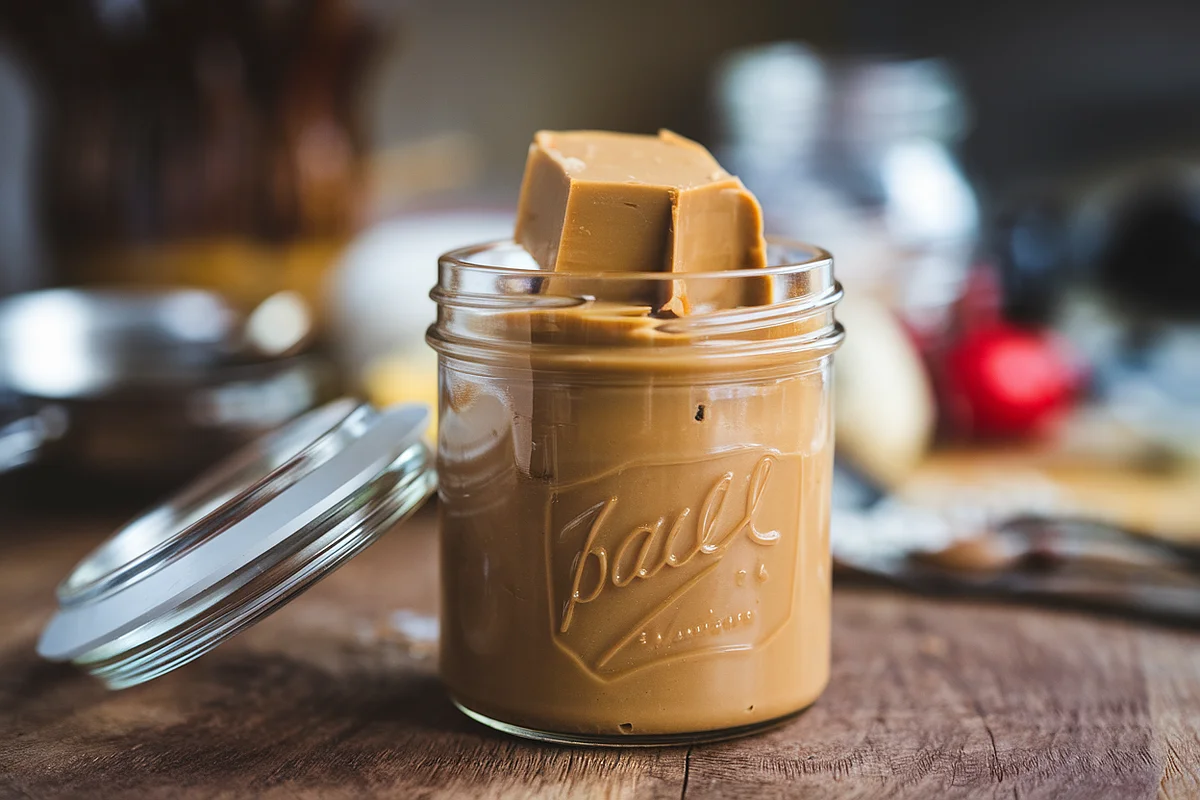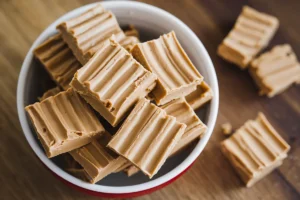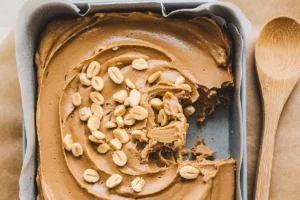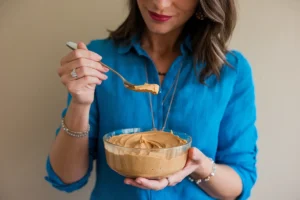Peanut butter fudge is a delicious and often relatively simple treat to make. Nevertheless, one of the most frustrating moments for any fudge lover is when it refuses to harden properly. Rather than achieving a firm, chewy texture, you may find yourself staring at a sticky or runny mess that just won’t set. This issue can arise for several reasons. In this guide, we will explore the science behind fudge-making, identify common mistakes, and offer effective solutions to troubleshoot and fix this sticky situation.
There are multiple factors that could be at play when your peanut butter fudge doesn’t firm up as expected. Understanding these factors is key to ensuring your fudge sets correctly every time.
Why Did My Peanut Butter Fudge Not Get Hard?
When your peanut butter fudge remains soft and refuses to harden, the issue usually falls into one of three categories: incorrect ingredient proportions, improper cooking temperatures, or environmental factors such as humidity. Each of these factors plays a crucial role in determining the final consistency of your fudge.
Key Factors:
- Incorrect ingredient ratios: Adding too much peanut butter or too little sugar can result in a fudge that remains too soft and never achieves the desired firmness.
- Temperature issues: Cooking the fudge at an inappropriate temperature can prevent it from setting.
- Humidity and environment: High humidity or improper cooling techniques can also stop your fudge from hardening.
Fudge-making is a delicate balance between art and science. To achieve the perfect fudge consistency, you must follow the recipe closely, manage the cooking temperature accurately, and use the correct ingredient proportions. Additionally, factors such as sugar crystallization play a crucial role in the hardening process. If the sugar does not crystallize correctly, your fudge may remain soft and sticky. To better understand how sugar behaves during the candy-making process, consider reading more about sugar crystallization.
Another significant factor is temperature. Fudge-making requires cooking the mixture to a precise temperature to allow the ingredients to bind and set properly. Failing to do so can result in a soft, oily, or runny fudge. If you’re curious about how humidity can impact your baking success, this article on humidity’s impact on baking provides excellent insight.
The Science Behind Fudge-Making
Understanding the science behind fudge-making can help you pinpoint what might have gone wrong during your process. Fudge is traditionally made from simple ingredients such as sugar, butter, and milk. When these ingredients are cooked together, they undergo a transformation, creating the smooth, creamy texture we all expect from good fudge. However, adding peanut butter to the mix adds an extra layer of complexity, as it introduces additional fats and oils that can interfere with the setting process.
How Fudge Sets:
- Dissolving sugar: The sugar dissolves and forms a syrup as it cooks.
- Evaporation: Water from the milk evaporates during the heating process, which thickens the syrup.
- Cooling and crystallization: Once cooled, the sugar crystallizes and gives the fudge its firm texture.
However, the extra fats and oils in peanut butter can sometimes prevent proper crystallization. If your recipe includes too much peanut butter compared to the sugar, or if you use a low-fat or natural peanut butter, you may experience issues with the fudge not setting correctly.
Common Mistakes to Avoid When Making Peanut Butter Fudge
Making fudge may seem straightforward, but even minor mistakes can significantly impact the outcome. Here are the most common mistakes people make when preparing peanut butter fudge and how to avoid them.
1. Using Incorrect Ingredient Proportions
- The ratio of peanut butter to sugar is critical for achieving the right texture. Too much peanut butter or too little sugar can result in fudge that stays soft.
- Solution: Always measure your ingredients accurately and follow the recipe closely. A common recommendation is to use 1 cup of sugar for every ½ cup of peanut butter.
2. Overcooking or Undercooking the Mixture
- Fudge needs to be cooked to a precise temperature, usually between 235°F and 240°F (the soft-ball stage). If you overcook it, the sugar may harden too much, and if you undercook it, the fudge may remain too soft.
- Solution: Use a candy thermometer to ensure you are cooking the fudge to the correct temperature.
3. Stirring Incorrectly
- Stirring too much can cause the sugar to crystallize prematurely, resulting in grainy fudge. Stirring too little can leave the mixture inconsistent.
- Solution: Stir only as directed in the recipe, and be mindful of over-mixing or under-mixing.
4. Not Allowing the Fudge to Cool Properly
- Placing hot fudge directly into the fridge can lead to condensation, which can make the fudge soft and sticky.
- Solution: Let the fudge cool to room temperature before placing it in the refrigerator to avoid excess moisture.
By avoiding these common pitfalls, you’ll significantly increase your chances of creating fudge that sets properly.
Adjusting Ingredient Ratios for the Perfect Consistency
If your peanut butter fudge is turning out too soft, there’s a good chance the ingredient ratios are off. One of the easiest ways to improve the consistency is to tweak the balance between sugar and peanut butter.
Fixes for Too Soft Fudge:
- Add more sugar: Gradually add more sugar to the mixture until it thickens to the desired consistency. This extra sugar will help the fudge bind together and harden.
- Reduce the amount of peanut butter: You can also try reducing the peanut butter in the recipe. Too much peanut butter adds excess oil and fat, which prevents the fudge from firming up.
Experimenting with Ratios:
- Try using 1 cup of sugar for every half cup of peanut butter. This ratio will help the fudge achieve the right balance between sweetness and texture without becoming too soft.
- Some recipes suggest using powdered sugar instead of granulated sugar, as it can result in a finer, smoother fudge.
By making these slight adjustments, you’ll be able to control the firmness of your fudge and avoid the frustration of a runny, gooey batch.
Temperature Control in Fudge-Making
Temperature control is one of the most critical factors when making fudge. If the fudge is not cooked to the right temperature, the sugar won’t crystallize properly, which means the fudge will either be too soft or too hard.
Optimal Temperature for Fudge:
- Cook the fudge to 235–240°F (the soft-ball stage). At this point, the sugar will form soft crystals, giving the fudge its ideal texture—firm, but not too hard.
- Always use a candy thermometer to ensure accuracy. Guesswork will likely result in inconsistent results.
Common Temperature Mistakes:
- Underheating: If you don’t reach the soft-ball stage, your fudge will remain soft and will not harden.
- Overheating: If the mixture goes beyond 240°F, the sugar may crystallize too much, leaving the fudge brittle and crumbly.
Monitoring the temperature closely and using a reliable thermometer can greatly increase your chances of success. Avoid multitasking while your fudge is cooking, as even a few degrees off can make a difference.
Troubleshooting Peanut Butter Fudge That Refuses to Harden
Even if you follow the recipe carefully, there are times when your fudge might still refuse to harden. Fortunately, there are a few troubleshooting techniques that can help you salvage your batch.
1. Check the Temperature
- If your fudge didn’t reach the soft-ball stage (235–240°F), it won’t harden properly. You can try reheating the mixture and cooking it to the correct temperature. Reheating and re-cooking can often fix the problem.
2. Consider the Humidity
- High humidity can introduce too much moisture into the fudge-making process, preventing the sugar from crystallizing. If you live in a humid area, consider making fudge on a drier day or use a dehumidifier in the kitchen to control moisture levels.
3. Add Corn Syrup
- If your fudge is grainy or isn’t setting properly, adding a small amount of corn syrup can help. Corn syrup prevents sugar from crystallizing too early, which can result in a smoother and firmer fudge texture.
By implementing these quick fixes, you’ll often be able to save a batch of fudge that refuses to harden.
Alternative Uses for Runny Peanut Butter Fudge
If your fudge refuses to harden despite your best efforts, don’t worry! There are several delicious ways to repurpose runny fudge, so it doesn’t go to waste.
- Drizzle over desserts: Use the soft fudge as a topping for ice cream, cakes, or brownies for an indulgent treat.
- Filling for cookies or cake layers: Spread the runny fudge between cookies or cake layers for a gooey, delicious filling.
- Mix it into frosting: Blend the runny fudge with frosting to create a rich, peanut-buttery topping for cupcakes, pastries, or even pancakes.
Even though the fudge didn’t turn out the way you planned, there are still many ways to enjoy its flavor in other forms!
Advanced Fudge-Making Techniques for Experienced Bakers
For those who have mastered the basics of fudge-making and are looking to elevate their skills, there are several advanced techniques that can help you consistently create perfect fudge with the desired creamy and smooth texture.
1. Use a Double Boiler
- A double boiler helps maintain consistent heat without burning the fudge. This technique prevents scorching, which can result in an uneven texture.
2. Spread the Fudge Evenly
- Use a spatula to spread the fudge evenly in the pan. This ensures that the fudge cools at a consistent rate and prevents one area from hardening more than the other.
3. Master the Timing
- Perfect fudge requires impeccable timing. Learning when to take the fudge off the heat and when to add ingredients is key to mastering this technique. Timing is everything in achieving the right texture.
With practice and patience, you’ll be able to master these advanced techniques and produce fudge that is consistently smooth, creamy, and perfectly set.
FAQs
Why Didn’t My Fudge Set?
- Fudge that fails to set is usually the result of incorrect cooking temperatures, too much peanut butter, or environmental factors like humidity. Adjusting these variables can often resolve the issue.
How Do You Fix Fudge That Won’t Set?
- Reheat the mixture to the correct temperature (235–240°F) or add more sugar to bind the mixture together.
How Long Does Fudge Take to Harden?
- Fudge typically takes 2–4 hours to harden at room temperature. Refrigerating it can speed up the process, but be sure to cool it to room temperature before placing it in the fridge.
Can You Put Fudge in the Fridge to Harden?
- Yes, but make sure to cool the fudge at room temperature first to avoid condensation, which can soften the fudge.
Conclusion
Making perfect peanut butter fudge can be challenging, but by understanding the science behind the process and avoiding common mistakes, you can achieve that firm, melt-in-your-mouth texture every time. The keys to success are temperature control, proper ingredient ratios, and cooling techniques. Don’t be discouraged if your fudge doesn’t set on the first try—practice and patience will help you perfect your fudge-making skills over time.



